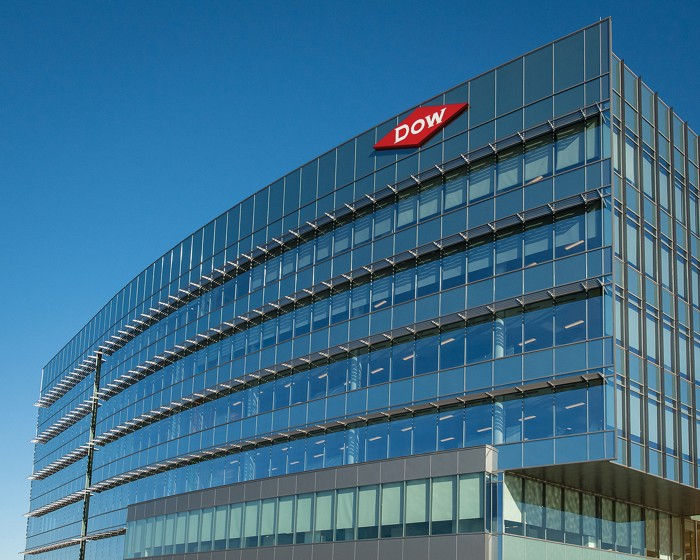Uncovering the Game-Changing Impact of DAS Technology: A Case Study with The DOW Chemical Company
- Weston Holley
- Jan 11
- 3 min read
In today's fast-paced and highly connected world, having reliable communication is more than just a convenience; it's essential. Companies that overlook strong connectivity solutions risk falling behind their competitors. This case study details how The DOW Chemical Company adopted a Distributed Antenna System (DAS) to transform communication across their facilities, resulting in impressive outcomes and a more effective work environment.
Understanding DAS Technology
A Distributed Antenna System (DAS) delivers seamless wireless coverage within a specific area. It uses a network of antennas placed strategically throughout a facility, all connected to a central source. DAS enhances cellular signals, making sure that everyone — from employees to visitors — has strong and consistent connectivity, especially in complex spaces like manufacturing plants.
This technology can be especially beneficial in large industrial settings, particularly chemical manufacturing plants, where obstacles like thick walls or remote locations can weaken cellular reception. For instance, a DAS can boost signal strength by up to 30% compared to conventional methods.
The Challenge Faced by DOW Chemical Company
DOW Chemical operates numerous facilities worldwide, each with its own unique challenges. At one significant manufacturing site, the existing cellular network struggled to provide reliable coverage. Various environmental factors, including the facility's design and interference from machinery, limited connectivity.
As a result, employees frequently encountered frustrating connectivity problems, impacting communication and teamwork. This led to more downtime, inefficiencies in everyday operations, and ultimately affected productivity. Recognizing the urgent need for a dependable wireless communication solution became crucial.
Initiating the DAS Implementation
Implementing DAS was a strategic decision that required careful planning. DOW Chemical's IT and infrastructure teams undertook exhaustive research to find solutions that aligned with their operational needs. They collaborated with multiple vendors to clarify their requirements and understand the capabilities of DAS technology.
Once a vendor was chosen, the implementation process unfolded:
Conducting a Site Survey: The vendor mapped the facility, identifying key zones that required coverage. This survey considered factors such as the types of building materials that could obstruct signals.
Customized Network Design: A bespoke DAS design was developed, ensuring antennas were positioned optimally to maximize coverage without significant signal loss.
Installation and Configuration: Planning the installation was essential to minimize operational disruptions. DOW's teams worked hand-in-hand with the vendor to ensure a smooth integration into daily processes.
Testing and Optimization: After installation, thorough testing of the system was conducted. Adjustments were made to further enhance performance and ensure it met DOW's standards.
The Results Achieved
The introduction of DAS at DOW Chemical resulted in significant advancements in connectivity across their operations. Some of the most notable outcomes included:
Enhanced Communication
Employees immediately noticed improved call quality and faster data transfer rates. Consistent communication channels enabled better collaboration and quicker decision-making. For example, teams reported a 50% decrease in message-response time, allowing for rapid solutions to potential issues.
Increased Productivity
When connectivity is reliable, employees can quickly access essential information and communicate in real time. This enhancement led to reported productivity increases of up to 40%, directly contributing to operational efficiency.
Safety Improvements
Safety is crucial in the chemical industry. The upgraded communication capabilities allowed for quicker responses during emergencies. Real-time alerts could be shared across the facility instantly, ensuring personnel remained informed and safe.
Greater Employee Satisfaction
The new connectivity significantly boosted employee morale. With reliable access to communication platforms and quick support when needed, staff felt more engaged and empowered. A survey conducted post-implementation revealed that 85% of employees felt more satisfied with their workplace connectivity.
Future Outlook
DOW Chemical is committed to ongoing improvement and innovation. The success of the DAS implementation has paved the way for further investments in communication solutions across additional sites.
The company sees this initiative as beyond just a tech upgrade; it's a strategic move to enhance workplace efficiency and safety. By focusing on solid communication infrastructure, DOW positions itself to take advantage of new technologies, including the Internet of Things (IoT) and smart manufacturing tools, which promise to elevate operational capabilities.
Reflection on Impact
The case of The DOW Chemical Company showcases how DAS technology can dramatically change connectivity within industrial environments. By investing in a tailored DAS solution, DOW effectively tackled significant challenges that once limited performance and safety.
The positive results underscore the need for organizations to prioritize communication infrastructures that cater to their specific operational requirements. As technology continues to advance, businesses that adopt innovative solutions like DAS will be more capable of handling the complexities of today's industries, thus fostering a more efficient, safe, and satisfying workplace.

Comments